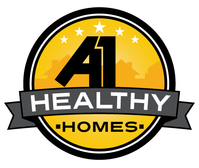Is Radon a Real Problem?

Radon is a natural, tasteless, odorless, colorless, radioactive gas produced from the decay of uranium found in nearly all soils. Radon gas moves from the ground under and around your home through cracks and other holes in the foundation. Nearly one out of every 15 homes in the U.S. is estimated to have elevated radon levels. The only way to know the radon level in your home is to test.
Radon testing results in Kansas show there is a need for more testing. Current data indicates that one in three houses in Kansas may have elevated levels. In some counties this rate may be higher.
Radon is the leading cause of lung cancer among nonsmokers. Given the increased potential for lung cancer the radon hazard brings, Kansans should be asking themselves, "Have we tested our home yet?".
Nationally, radon contributes to about 21,000 deaths per year from lung cancer. The risk of developing lung cancer increases as the concentration and length of exposure to radon increases. Many scientists believe children may run an even greater risk from radon exposure than adults, and smokers are definitely at greater risk than nonsmokers.
The Surgeon General’s Office, the American Lung Association, the American Medical Association, and the U.S. Environmental Protection Agency (EPA) recognize that indoor radon constitutes a substantial health risk. They have publicly advised that all homes be tested.
Kansas has adopted legislation related to radon, contained in K.S.A. 58-3078a. As of July 1, 2009, all residential real property contracts in the state of Kansas will require the insertion of the following statement related to radon:
‘‘Every buyer of residential real property is notified that the property may present exposure to dangerous concentrations of indoor radon gas that may place occupants at risk of developing radon-induced lung cancer. Radon, a class-A human carcinogen, is the leading cause of lung cancer in non-smokers and the second leading cause overall. Kansas law requires sellers to disclose any information known to the seller that shows elevated concentrations of radon gas in residential real property. The Kansas department of health and environment recommends all home-buyers have an indoor radon test performed prior to purchasing or taking occupancy of residential real property. All testing for radon should be conducted by a radon measurement technician. Elevated radon concentrations can be easily reduced by a radon mitigation technician. For additional information go to www.kansasradonprogram.org."
Kansas has also adopted legislation, contained in the Kansas Radon Certification Law (K.S.A. 2010 Supp 48-16a01 through 48-16a12). As of July 1, 2011, all professional radon contractors and laboratories operating in Kansas must obtain certification through the Kansas Department of Health and Environment (KDHE). The three categories of certification are measurement, mitigation, or radon laboratory. You can obtain a list of Kansas certified radon professionals at www.kansasradonprogram.org.
Currently, the Kansas Radon Program’s database of radon tests conducted in Kansas has greater than 50,000 measurements. The average observed residential radon test in Kansas is currently 4.8 pCi/L, or in excess of the EPA’s action level of 4.0 pCi/L. The maximum reported radon value in Kansas to date is 260 pCi/L.
One reason a larger percentage of homes have been tested in urban areas is because most relocation companies require testing before they handle a property. Many corporations use relocation companies to purchase homes of transferred employees, allowing them to move more quickly.
Potential liability concerns have led these companies to require radon testing before purchasing the property. If a radon test result is equal to or higher than 4 picocuries per liter (pCi/l), the relocation company requires radon reduction work be done and a retest to confirm lowered radon levels.
Some trends are starting to become evident in Johnson County where, according to private testing firms, 40 percent, and in some communities 50 percent, of the homes tested have levels of more than 4 picocuries per liter. A few homes have produced short-term test results in excess of 100 picocuries per liter. Radon statistics for each Kansas county are available on www.kansasradonprogram.org.
Typical radon levels in outdoor air range from 0.2 to almost 1 pCi/l. The average indoor level is 1.3 pCi/l. The EPA’s recommended action level is 4 pCi/l.
Radon is an environmental health hazard that you can act against. Why ignore it? Why not remove all doubt? Test for radon now.
Call today for FREE Estimate
Web Hosting by FatCow
